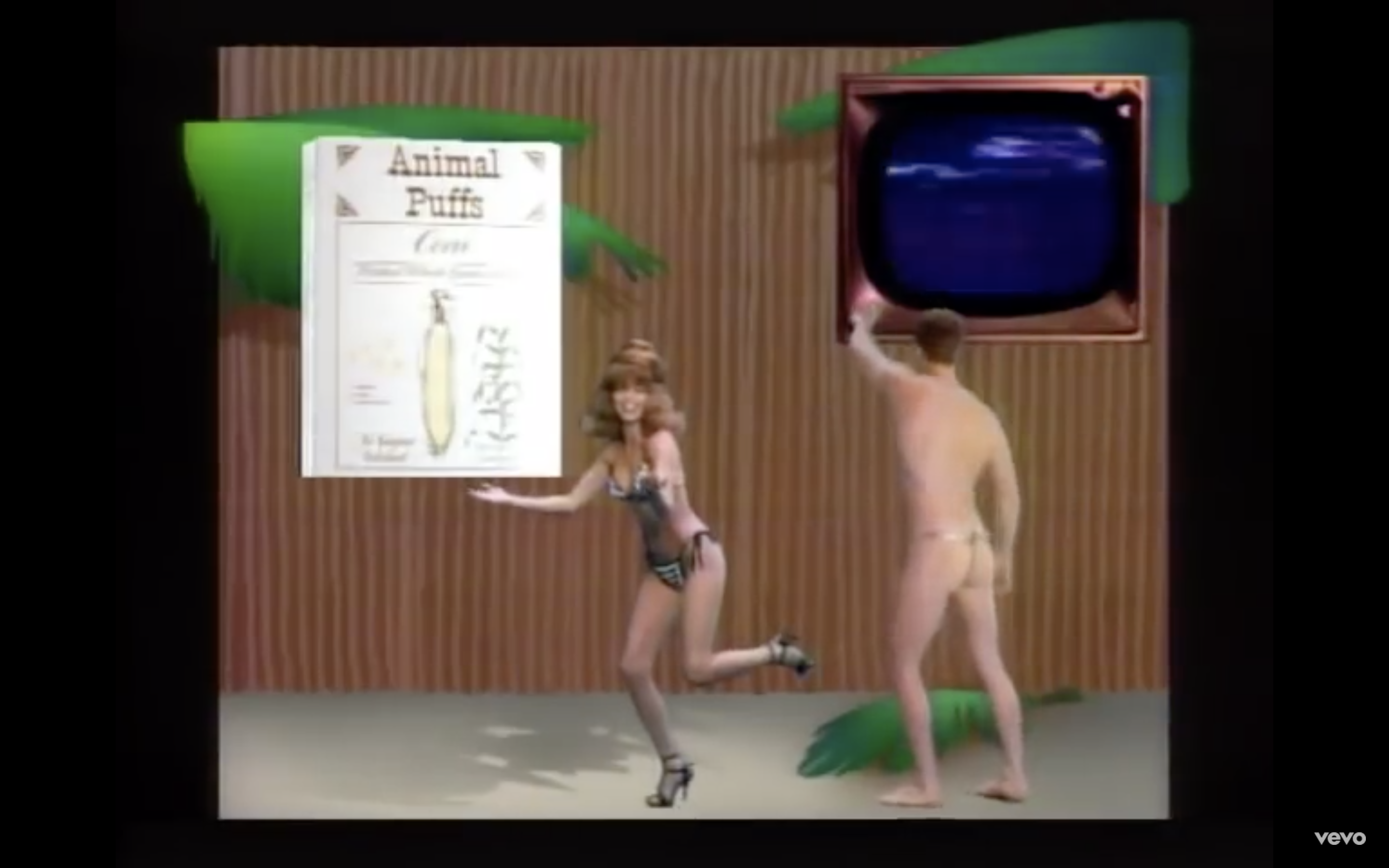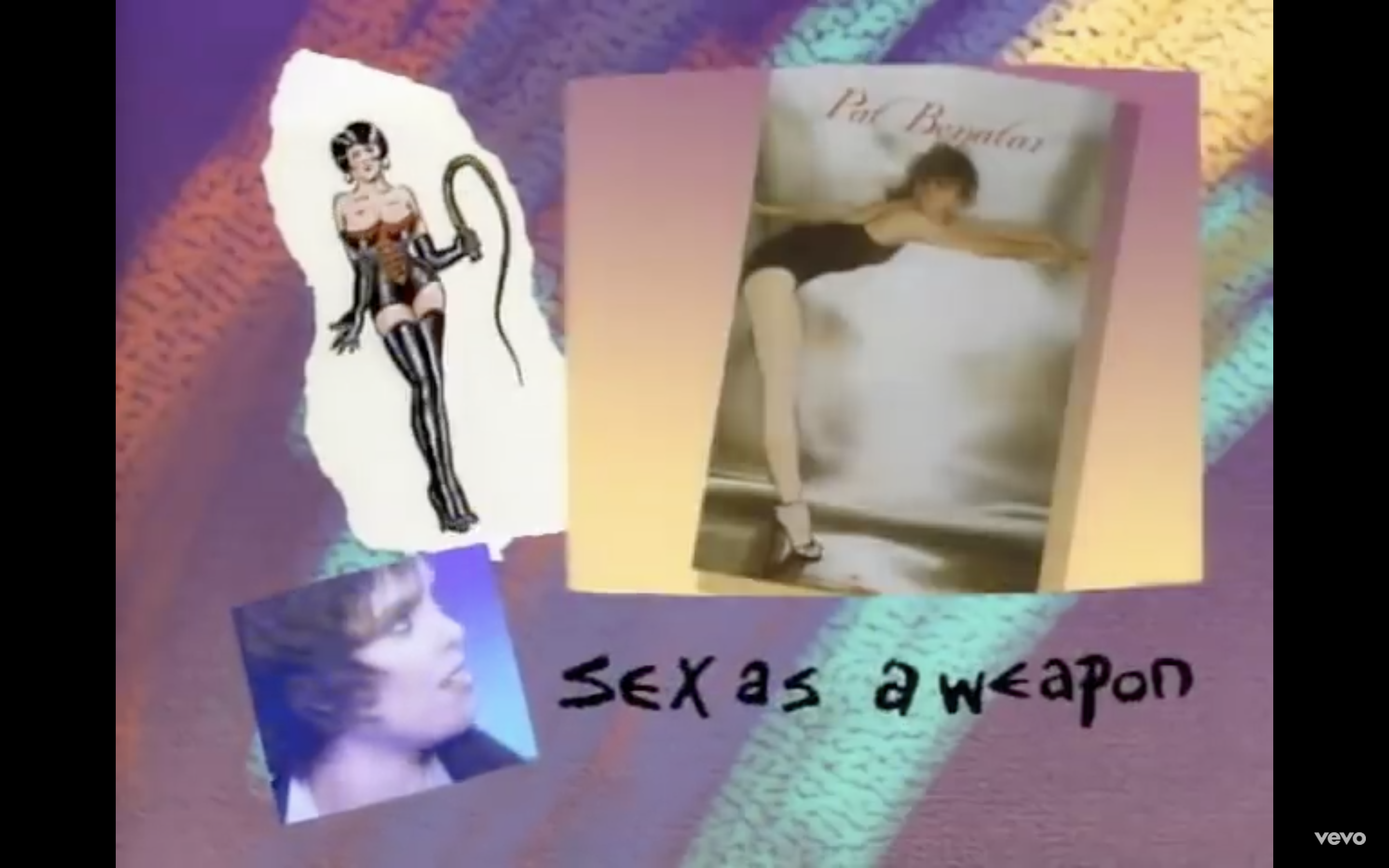
Nominated for MTV’s Most Experimental Video in 1986, this music video showcases third wave feminism ideals, centering on the issue of exploitation of women’s bodies for the purpose of advertising. The video opens as if itself was a commercial or television show, with six different camera frames showing either band members, or other women in heavy makeup or scandalous outfits. This shows that it is both a performance and artistic video. The band is shown playing throughout the duration of the video, however there are also unconventional artistic choices that accompany the performers, including split frames, contrasting color themes and backgrounds, and a collage type of arrangement of videos on one screen. The unusual nature of the video helps it to easily grab the attention of viewers. This is important because these feminist type videos are competing with all of the other videos on MTV, so being able to have a visually entertaining video is crucial to spread the message (Roberts 1990, 7).

The idea that “sex sells” is forefront of the video as scenes involving advertisements are coupled with overly sexualized men and women. From 3:10 to 3:35, different barely dressed women are seen showing off different products, as the essentially naked man changes the channels on the television. Robin Roberts’ details how Benatar and other female rock artists of the 1980s used this visual of slight humor and self-consciousness to highlight how women’s bodies were being exploited for selling products, and used “mass media to draw attention to capitalism and patriarchal power structures” (Roberts 1990, 9). The video also conveys the idea that music videos are another consumable product that women are being used to advertise, as per the scene of the woman pouring out the box of music videos at 3:31.

“Sex as a Weapon” also acts as a platform for her to speak about gender roles, as one of the main themes throughout the video is hypermasculinity. The lyrics imply being under the control of someone else, as they use their sexual appeal against their inferior. This is a mirror image to the control being yielded over women in the music industry, as Benatar experienced in the early days of her career. She acknowledges this with a shot of her looking at a picture from a photoshoot similar to the album cover of Crimes of Passionwhen she was wearing little clothing and had long curly hair. Her reaction towards the image is that of humorous antipathy. With this, she is recognizing the manipulation of producers and record label leaders, and how they took part in “sponsoring undesirable images” (Lewis 1990, 86). Lisa Lewis explains that even reports of the time, such as Rolling Stone, used her frustration about this manipulation to “bolster the argument that Benatar is a puppet…[and]… a product of manipulation… [with]… no legitimate claim to musicianship” (Lewis 1990, 86-87). This ‘ballerina’ look is very contrary to her look in the mid 1980s of short hair, jacket, and pants. This change of image shows how she took more control over her image, and expressed more androgyny as a way of pushing back against stereotypical female sexuality.

In third wave feminist fashion, Pat Benatar progresses along throughout the music video taking back oppressive images of women. Instead of “positioning the woman as the negative other of the omnipresent masculine subject” (Whitely 2000, 120), she takes the opportunity to show her attitude towards identity in the sense of taking back her image and sexuality instead of it being used as a ploy for male driven capitalism. Not only does her androgynous look separate her from the exploited women used for advertising, but she also separates herself by inputting herself in the video to take down the patriarchal powers. She denies the “James Bond” look alike the physical weapon of the gun, but figuratively the weapon of male power and charisma. By taking the gun and shooting the man, she assumes the position of power in an effort to take down the stereotypical gender norm of being powerless as a woman. These actions helped pave the way for future feminist artists to tackle sexism of their own time on their own platforms.